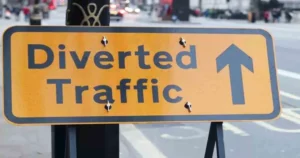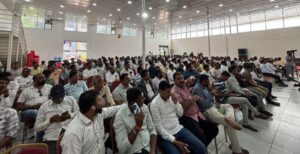Maharashtra Rolls Out EV Policy: Aims for 30% Electric Vehicles by 2030,Toll Waivers, Tax Exemptions, and Charging Infrastructure Expansion

Maharashtra Rolls Out EV Policy: Aims for 30% Electric Vehicles by 2030,Toll Waivers, Tax Exemptions, and Charging Infrastructure Expansion
In a bold step toward greener mobility, the Maharashtra government has introduced an ambitious Electric Vehicle (EV) Policy, aiming for 30% of all vehicles in the state to be electric by 2030. The policy will be effective from April 1, 2025, until March 31, 2030.
Key Objectives: Infrastructure, Manufacturing, and Incentives
The policy focuses on three core areas: expanding EV infrastructure, boosting EV production, and providing financial incentives to encourage early adoption. Maharashtra is positioning itself as a major EV hub in India and across Asia.
Environmental Targets: Reducing Pollution Through Clean Transport
The state aims to cut 325 tonnes of PM 2.5 and 1,000 tonnes of greenhouse gas emissions in the next five years through what it calls the “Clean Mobility Transition Model.”
Incentives for EV Buyers:
- Up to Rs 2 lakh for electric four-wheelers used in transport
- Up to Rs 20 lakh for electric buses
- Benefits for 1,00,000 electric two-wheelers, 25,000 electric four-wheelers (commercial use), and 1,500 electric buses
Additional Benefits:
- 100% Motor Vehicle Tax exemption
- Waiver of registration renewal fees
- Toll exemption on Mumbai–Pune and Mumbai–Nashik expressways
- Possible extension of toll waivers to other PWD roads
Charging Infrastructure Boost:
To ensure easy access to EV charging, the policy mandates:
- Charging stations every 25 km on highways
- Compulsory EV charging provisions in new residential buildings
- Charging points in all government office parking areas
- 50% EV-ready parking in new commercial complexes
- 20% charging capacity in shared parking areas of older commercial buildings
The government will also provide up to 15% Viability Gap Funding (VGF) for setting up public charging stations.
Government Leads by Example
All new intra-city vehicles procured by government departments must be electric. In cities like Mumbai, Pune, Nagpur, Nashik, Amravati, and Chhatrapati Sambhajinagar, 50% of new government utility vehicles must be electric.
Support for Innovation and Skill Development
- Rs 15 crore R&D grant to encourage innovation in battery tech, green hydrogen, and EV-to-grid systems
- Launch of new technical courses by MSBTE in EV design, power electronics, and energy management
- Development of Automated Testing Stations to ensure EV safety, including thermal battery performance
Maharashtra’s new policy signals a significant leap toward sustainable transport, with clear goals, strong incentives, and a forward-looking approach to infrastructure and innovation.
ALSO READ: Mumbai Battered by Early Monsoon: Red Alert Issued, Roads Collapse, Flights Delayed












